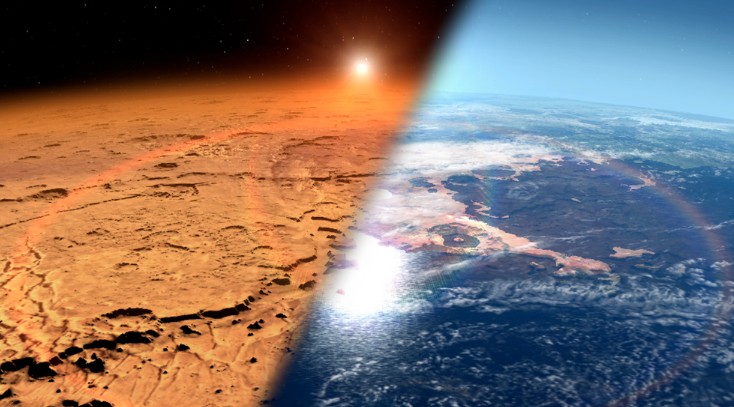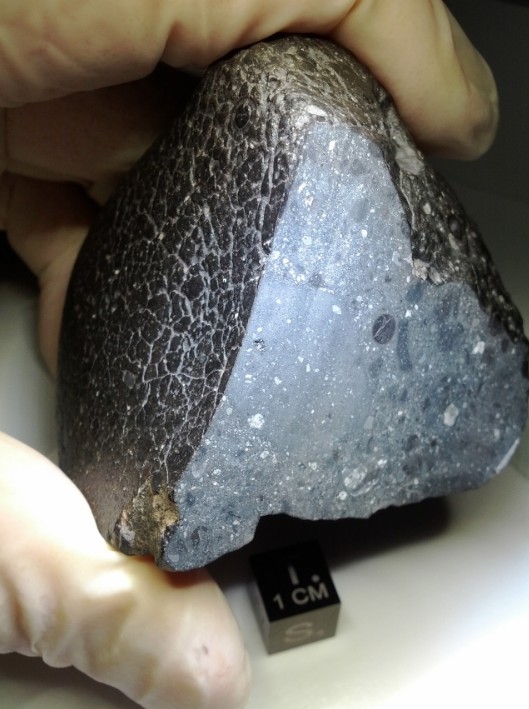Research suggests water is naturally occurring on all rocky planets

A new study published recently in Science Advances suggests that water may be naturally occurring on planets and does not require an external source like water-rich asteroids. The study turns the current theory about the emergence of water upside down.
The research was led by Professor Martin Bizzarro and Assistant Professor Zhengbin Deng, from the Centre for Star and Planet Formation at the Faculty of Health and Medical Sciences, University of Copenhagen.
There are currently two hypotheses about the emergence of water on planets. The first states that it arrives by accident when asteroids containing water collide with planets; and the other that it emerges in connection with the formation of the planet.
If Martin Bizzarro and Zhengbin Deng's theory proves correct, life in planetary systems may have had better chances of developing than previously assumed.
The researchers' studies show that there was water on Mars for the first 90 million years of the planet's existence.
In astronomical time, this is a long time before water-rich asteroids bombarded the planets of the inner Solar System like Earth and Mars, according to the first hypothesis. And this is very sensational, Bizzarro explains.
"It suggests that water emerged with the formation of Mars. And it tells us that water may be naturally occurring on planets and does not require an external source like water-rich asteroids," he says.
The study is based on analyses of a 4.45 billion years old black meteorite designated Northwest Africa (NWA) 7034, and nicknamed Black Beauty.
Black Beury was found in Rabt Sbayta, Ghredad Sabti region in the Sahara Desert in 2011, and was purchased in Morocco by a meteorite dealer who sold it to a collector in the United States.
The object originates from original Mars crust and contains invaluable knowledge about the young solar system.

Designated Northwest Africa (NWA) 7034, and nicknamed "Black Beauty," this Martian meteorite weighs approximately 320 grams (11 ounces). Credit: NASA
"It is a gold mine of information. And extremely valuable," says Bizzarro.
With help from funds, Martin Bizzarro managed to buy just under 50 grams — for 10 000 USD per gram — for research purposes back in 2017.
With the meteorite in the laboratory, they are now able to present signs of the presence of liquid water on Mars at the time of its formation.
First, however, they had to crush, dissolve and analyse 15 grams of the expensive rock.
"We have developed a new technique that tells us that Mars in its infancy suffered one or more severe asteroid impacts," Deng said.
"The impact, Black Beauty reveals, created kinetic energy that released a lot of oxygen. And the only mechanism that could likely have caused the release of such large amounts of oxygen is the presence of water."
Another bone of contention between researchers is how Mars with its cold surface temperature could accommodate liquid water causing the depositions of rivers and lakes visible on the planet today. Liquid water is a precondition for the assembling of organic molecules, which is what happened at least 3.5 billion years ago at the emergence of life on Earth.
The researchers' analysis of Black Beauty shows that the asteroid impact on Mars released a lot of greenhouse gasses into the atmosphere.
"This means that the CO2-rich atmosphere may have caused temperatures to rise and thus allowed liquid water to exist at the surface of Mars," says Deng.
The team is now doing a follow-up study examining the microscopic water-bearing minerals found in Black Beauty. The age-old watery minerals are both original and unchanged since their formation, which means that the meteorite has witnessed the very emergence of water.
Reference:
"Early oxidation of the martian crust triggered by impacts" – Deng et al. – Science Advances – DOI: 10.1126/sciadv.abc4941
Abstract
Despite the abundant geomorphological evidence for surface liquid water on Mars during the Noachian epoch (>3.7 billion years ago), attaining a warm climate to sustain liquid water on Mars at the period of the faint young Sun is a long-standing question. Here, we show that melts of ancient mafic clasts from a martian regolith meteorite, NWA 7533, experienced substantial Fe-Ti oxide fractionation. This implies early, impact-induced, oxidation events that increased by five to six orders of magnitude the oxygen fugacity of impact melts from remelting of the crust. Oxygen isotopic compositions of sequentially crystallized phases from the clasts show that progressive oxidation was due to interaction with an 17O-rich water reservoir. Such an early oxidation of the crust by impacts in the presence of water may have supplied greenhouse gas H2 that caused an increase in surface temperature in a CO2-thick atmosphere
Featured image: This artist’s concept depicts the early Martian environment (right) – believed to contain liquid water and a thicker atmosphere – versus the cold, dry environment seen at Mars today (left). Credit: NASA’s Goddard Space Flight Center

Commenting rules and guidelines
We value the thoughts and opinions of our readers and welcome healthy discussions on our website. In order to maintain a respectful and positive community, we ask that all commenters follow these rules.